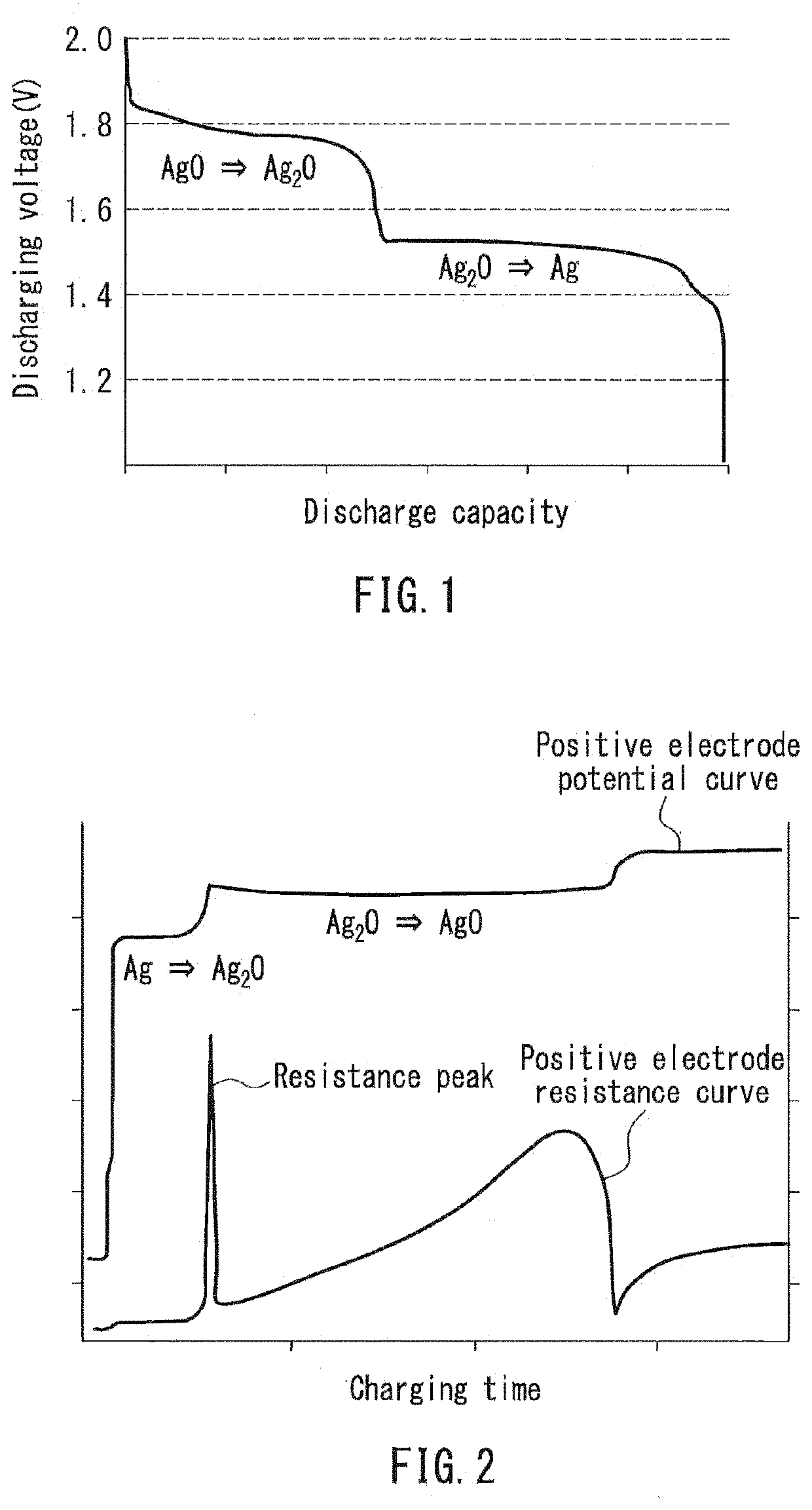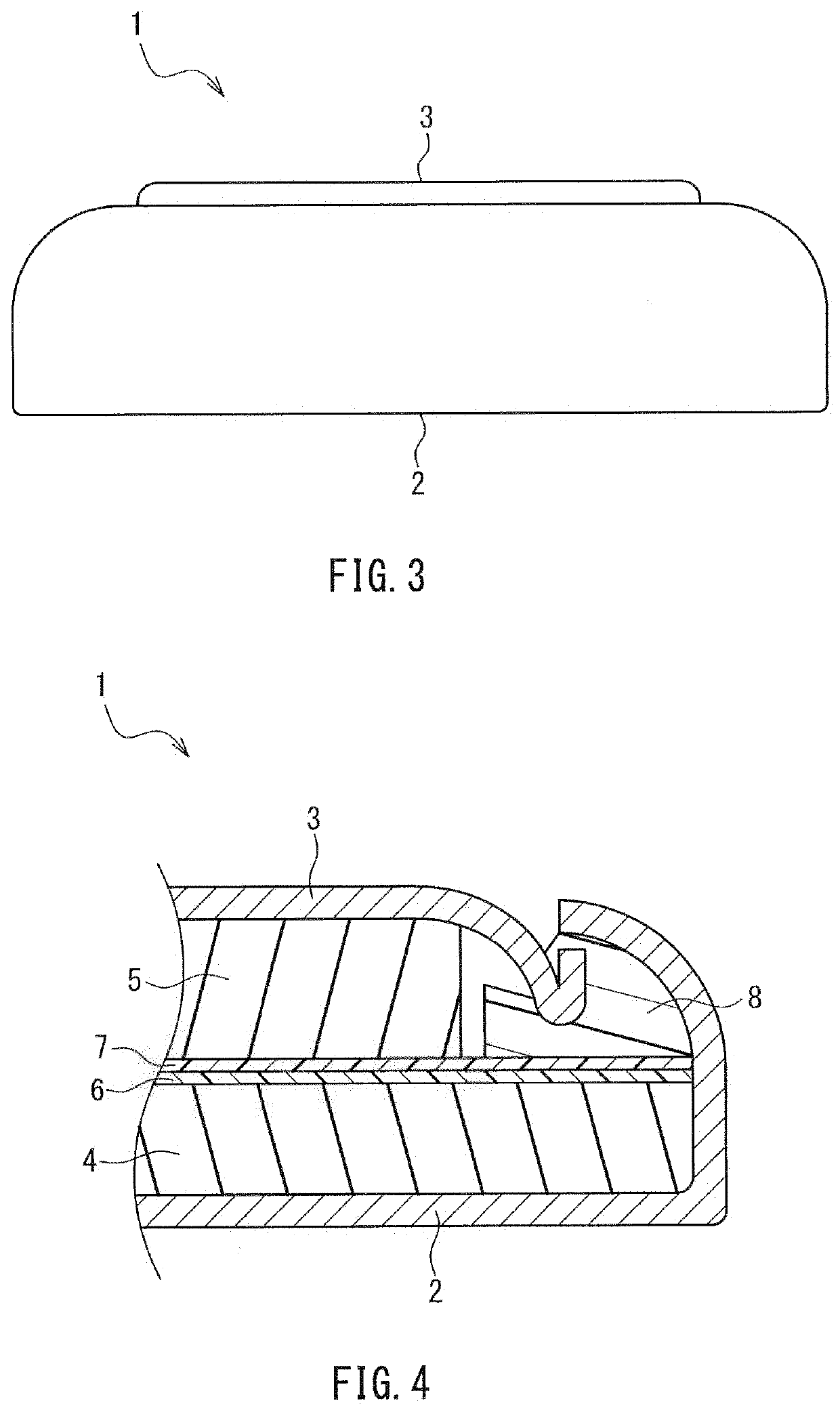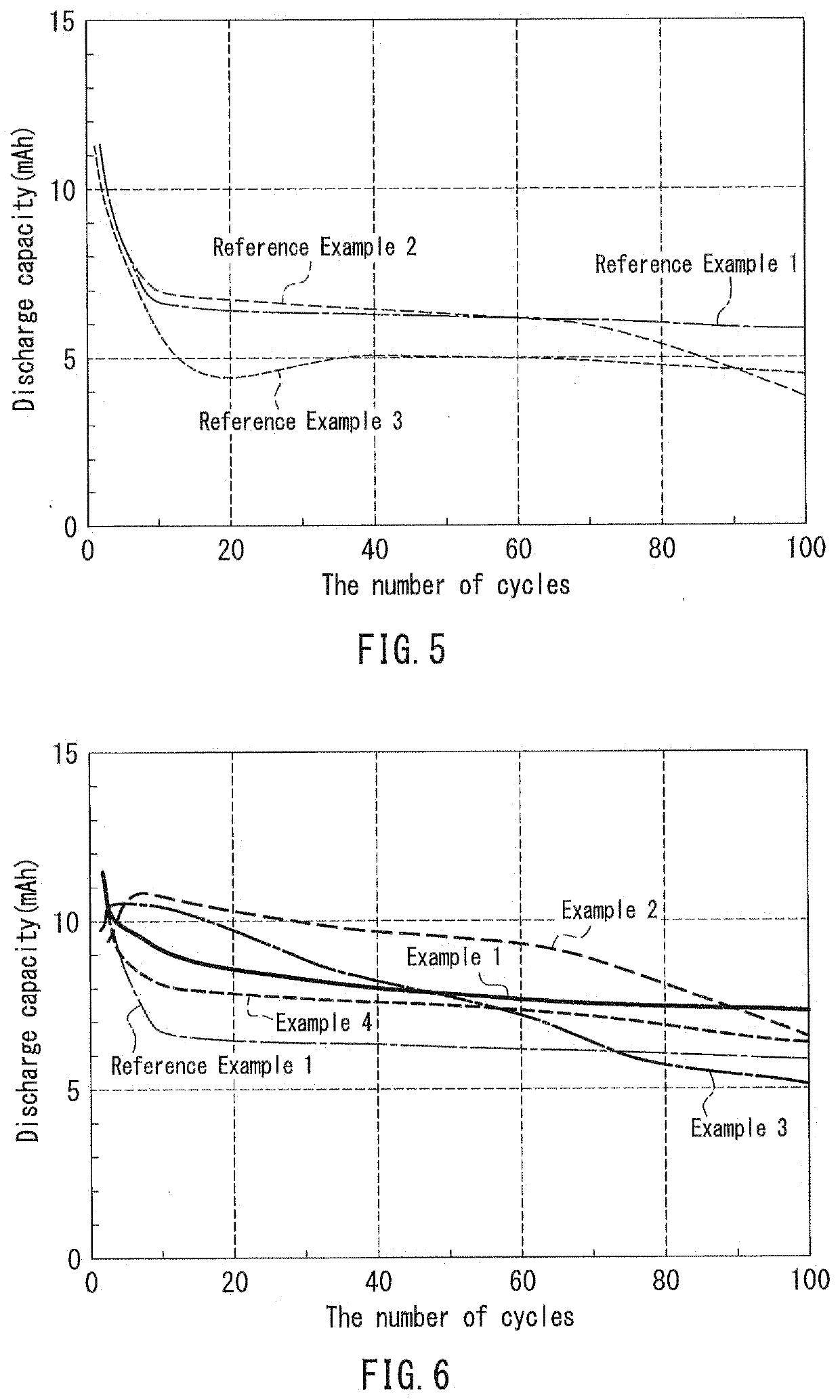Alkaline secondary battery, charging method of said alkaline secondary battery, and charging device of alkaline secondary battery
a secondary battery and charging method technology, applied in the direction of secondary battery servicing/maintenance, cell components, transportation and packaging, etc., can solve the problems of reducing the utilization rate of active materials, affecting the service life of secondary batteries, and reducing so as to improve the charging-discharging cycle characteristics, reduce the capacity drop, and reduce the capacity drop of alkaline secondary batteries
- Summary
- Abstract
- Description
- Claims
- Application Information
AI Technical Summary
Benefits of technology
Problems solved by technology
Method used
Image
Examples
reference example 1
[0140]A positive electrode mixture layer was formed by using a silver oxide (Ag2O) having an average particle size of 5 μm as a positive electrode active material, and further using graphite particles (BET specific surface area: 20 m2 / g, average particle size: 3.7 μm) and carbon black particles (acetylene black, BET specific surface area: 68 m2 / g, average particle size of primary particles: 35 nm).
[0141]First, a positive electrode mixture was prepared by mixing 95.6 mass % of the silver oxide, 3.8 mass % of the graphite particles, and 0.6 mass % of the carbon black particles. Then, 80 mg of the positive electrode mixture was filled in a mold and molded under pressure into a disk shape with a packing density of 5.7 g / cm3, a diameter of 5.17 mm, and a height of 0.6 mm to produce a positive electrode mixture molded body (positive electrode mixture layer).
[0142]An anion conductive membrane to be used for the assembly of a battery was produced by kneading 5 g of a PTFE aqueous dispersion...
reference example 2
[0149]A positive electrode mixture molded body was produced in the same manner as in Reference Example 1 except for the use of a positive electrode mixture prepared by mixing 94.3 mass % of the silver oxide, 3.8 mass % of the graphite particles, and 1.9 mass % of the carbon black particles. An alkaline secondary battery was produced in the same manner as in Reference Example 1 except for the use of the above positive electrode mixture molded body.
reference example 3
[0150]A positive electrode mixture molded body was produced in the same manner as in Reference Example 1 except for the use of a positive electrode mixture prepared by mixing 94.3 mass % of the silver oxide and 5.7 mass % of the graphite particles. An alkaline secondary battery was produced in the same manner as in Reference Example 1 except for the use of the above positive electrode mixture molded body.
[0151]The alkaline secondary batteries of Reference Examples 1 to 3 were subjected to the following charging-discharging cycle test and high-temperature storage characteristic evaluation.
[0152]
[0153]The batteries of Reference Examples 1 to 3 were measured for a discharge capacity per cycle by repeating a charging-discharging cycle 100 times. One cycle included charging (current value: 2 mA, final voltage: 1.85 V) and discharging (current value: 2 mA, final voltage: 1.0 V). FIG. 5 is a graph illustrating the results, the horizontal axis representing the number of cycles, and the vert...
PUM
| Property | Measurement | Unit |
|---|---|---|
| particle size | aaaaa | aaaaa |
| charging voltage | aaaaa | aaaaa |
| mass | aaaaa | aaaaa |
Abstract
Description
Claims
Application Information
 Login to View More
Login to View More - R&D
- Intellectual Property
- Life Sciences
- Materials
- Tech Scout
- Unparalleled Data Quality
- Higher Quality Content
- 60% Fewer Hallucinations
Browse by: Latest US Patents, China's latest patents, Technical Efficacy Thesaurus, Application Domain, Technology Topic, Popular Technical Reports.
© 2025 PatSnap. All rights reserved.Legal|Privacy policy|Modern Slavery Act Transparency Statement|Sitemap|About US| Contact US: help@patsnap.com



